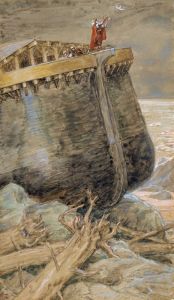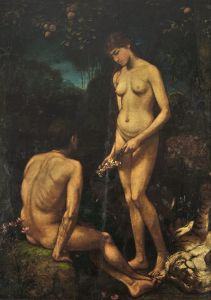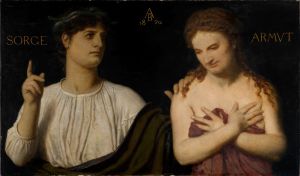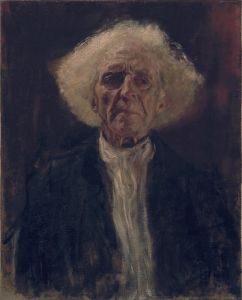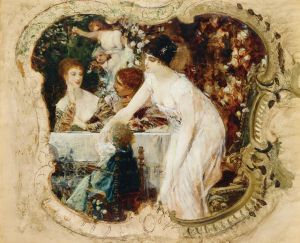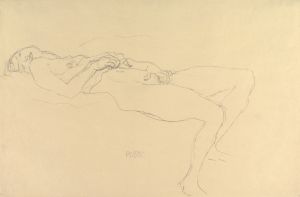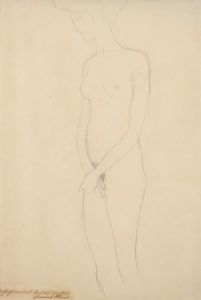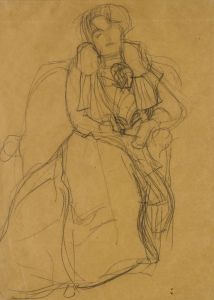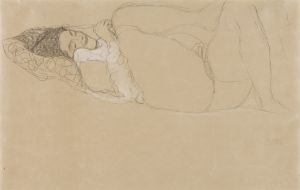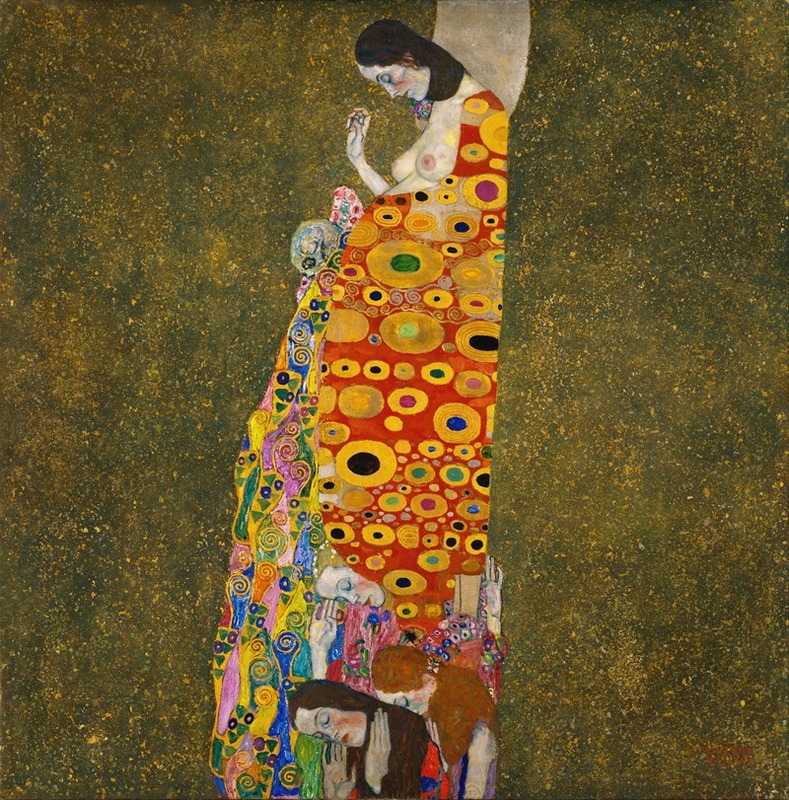
Hope, II
A hand-painted replica of Gustav Klimt’s masterpiece Hope, II, meticulously crafted by professional artists to capture the true essence of the original. Each piece is created with museum-quality canvas and rare mineral pigments, carefully painted by experienced artists with delicate brushstrokes and rich, layered colors to perfectly recreate the texture of the original artwork. Unlike machine-printed reproductions, this hand-painted version brings the painting to life, infused with the artist’s emotions and skill in every stroke. Whether for personal collection or home decoration, it instantly elevates the artistic atmosphere of any space.
"Hope, II" is a painting by the Austrian symbolist painter Gustav Klimt, completed in 1907-1908. This artwork is a significant example of Klimt's mature style, which is characterized by its intricate patterns, symbolic imagery, and the use of gold leaf. "Hope, II" is part of Klimt's exploration of themes related to life, death, and regeneration, which were recurrent in his work during this period.
The painting depicts a pregnant woman standing in the foreground, her head slightly bowed and her eyes closed, suggesting introspection or meditation. She is adorned in a richly patterned robe that is typical of Klimt's decorative style. The robe is embellished with a variety of motifs, including geometric shapes and floral patterns, which are rendered in vibrant colors and gold leaf. This use of gold is a hallmark of Klimt's work, particularly during his "Golden Phase," and it adds a luminous quality to the painting.
Behind the central figure, there are several other faces and figures, which appear to be intertwined with the patterns of the background. These figures are often interpreted as symbolic representations of life and death, a theme that Klimt explored in other works as well. The juxtaposition of the pregnant woman with these spectral figures suggests a meditation on the cycle of life and the inevitability of mortality.
"Hope, II" is notable for its complex composition and the way it blends figuration with abstraction. Klimt's use of decorative elements serves not only an aesthetic purpose but also a symbolic one, as the patterns and motifs contribute to the painting's thematic depth. The painting's title, "Hope," further emphasizes the duality of the subject matter, as it suggests both the promise of new life and the uncertainty that accompanies it.
This painting is a follow-up to Klimt's earlier work, "Hope, I," which also features a pregnant woman as its central subject. However, "Hope, II" is considered more complex in its composition and symbolism. The evolution from "Hope, I" to "Hope, II" reflects Klimt's growing interest in exploring the interplay between life and death, as well as his mastery of integrating symbolic content with decorative form.
"Hope, II" was first exhibited in 1909 at the International Art Exhibition in Vienna. It is currently housed in the Museum of Modern Art (MoMA) in New York City, where it remains an important part of the museum's collection of early 20th-century art. The painting continues to be studied and admired for its innovative use of materials, its intricate design, and its profound exploration of universal themes.
Gustav Klimt's work, including "Hope, II," has had a lasting impact on the development of modern art. His unique approach to painting, which combines elements of symbolism, Art Nouveau, and a personal iconography, has influenced numerous artists and continues to captivate audiences worldwide. "Hope, II" stands as a testament to Klimt's artistic vision and his ability to convey complex ideas through the medium of painting.






